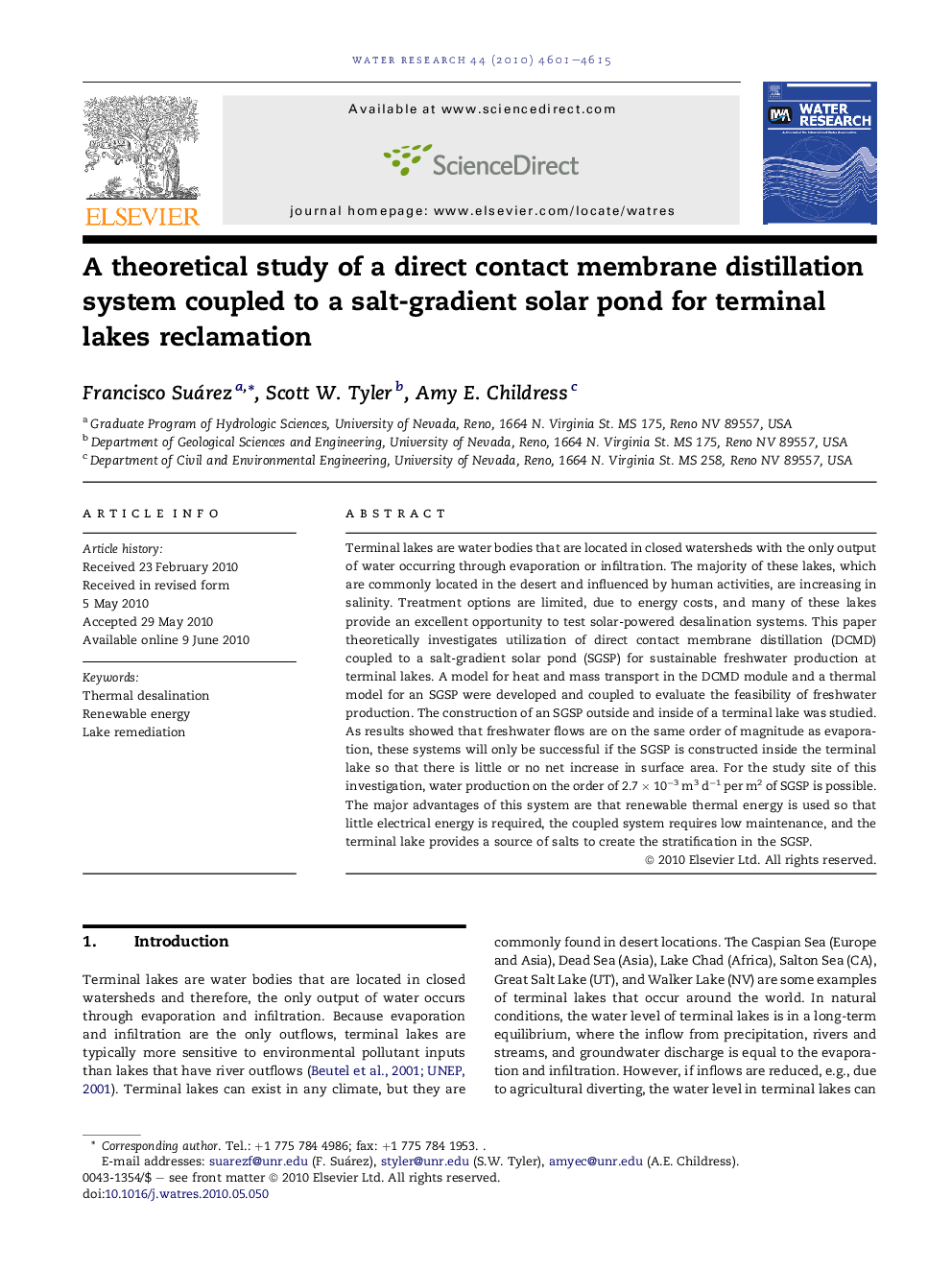| Article ID | Journal | Published Year | Pages | File Type |
|---|---|---|---|---|
| 4483870 | Water Research | 2010 | 15 Pages |
Terminal lakes are water bodies that are located in closed watersheds with the only output of water occurring through evaporation or infiltration. The majority of these lakes, which are commonly located in the desert and influenced by human activities, are increasing in salinity. Treatment options are limited, due to energy costs, and many of these lakes provide an excellent opportunity to test solar-powered desalination systems. This paper theoretically investigates utilization of direct contact membrane distillation (DCMD) coupled to a salt-gradient solar pond (SGSP) for sustainable freshwater production at terminal lakes. A model for heat and mass transport in the DCMD module and a thermal model for an SGSP were developed and coupled to evaluate the feasibility of freshwater production. The construction of an SGSP outside and inside of a terminal lake was studied. As results showed that freshwater flows are on the same order of magnitude as evaporation, these systems will only be successful if the SGSP is constructed inside the terminal lake so that there is little or no net increase in surface area. For the study site of this investigation, water production on the order of 2.7 × 10−3 m3 d−1 per m2 of SGSP is possible. The major advantages of this system are that renewable thermal energy is used so that little electrical energy is required, the coupled system requires low maintenance, and the terminal lake provides a source of salts to create the stratification in the SGSP.
